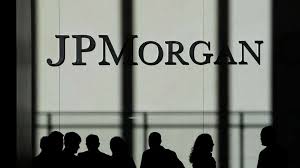Why JPMorgan Chase Is Putting $10 Million Into Two Neighborhoods in Washington, D.C.

JPMorgan Chase on Monday announced a plan to invest $ 10 million in Ward 7 and Ward 8, two neighborhoods in the southeastern part of the District of Columbia. The investment, while itself relatively small, is part of a broader push by the nation’s largest bank to direct its $ 250 million in annual philanthropic spending toward economic revival programs, particularly in underserved urban neighborhoods.
The biggest city-revival project in JPMorgan Chase’s portfolio so far is “Invested in Detroit,” a five-year, $ 150 million program that includes investments in real estate development, job skills training, and small business expansion. (Fortune wrote about Invested in Detroit in a recent feature: see “How JPMorganChase Is Fueling Detroit’s Revival.”)
In an op-ed published in Fortune on Monday, CEO Jamie Dimon and Head of Corporate Responsibility Peter Scher described the bank’s urban investments as an example of how philanthropic goals and business imperatives overlap. “By working to grow the economies of the communities we serve and playing a more active role in the future of people who live there,” they wrote, “we can earn a fair return for our shareholders and lay a foundation that promotes inclusive and sustainable growth.”
READ: Jamie Dimon: Investing in Society Is Good Business
The Washington, D.C., investment focuses on preserving affordable housing and funding small-business development around the 11th Street Bridge Park project. That project, modeled after New York City’s High Line, aims to build a string of parks and public amenities connecting Washington’s Anacostia neighborhood with the affluent Capitol Hill area; construction is slated to begin in 2019.
Washington has become one of the nation’s most expensive housing markets over the past decade. In a news release announcing the donation, JPMorgan Chase and its nonprofit partners in the area said the $ 10 million initiative was designed in part to keep local residents from being displaced by gentrification. About half of the funding will go toward that goal, with the rest directed toward financing for locally owned small businesses.
Dimon also discussed the Washington project in an onstage interview with Fortune editor-in-chief Clifton Leaf at Fortune and Time’s CEO Initiative conference on Monday in New York City. (Click here to see video highlights from that interview.)

